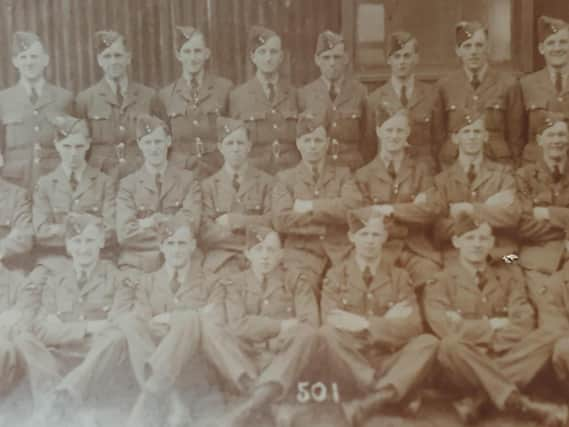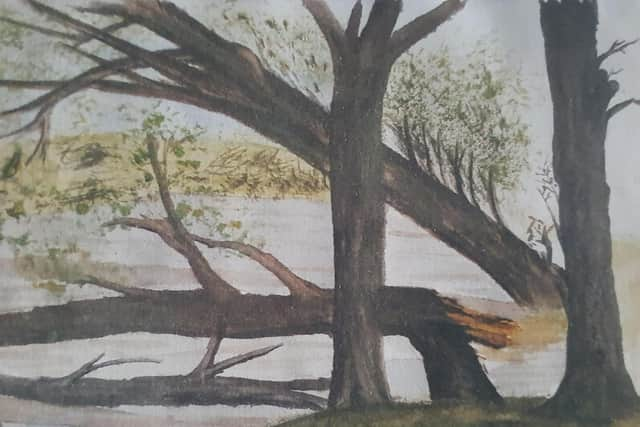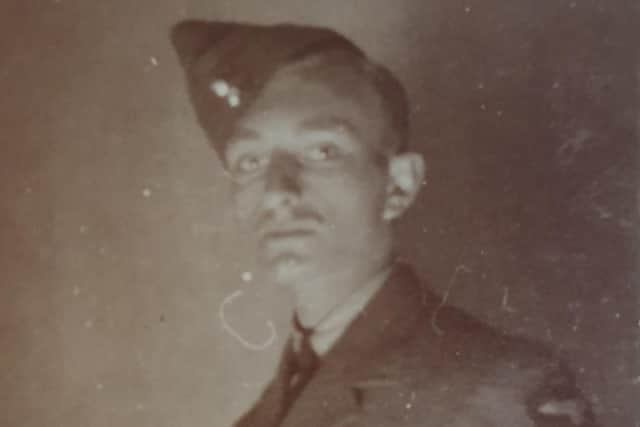My Father's War: Fears at home as Blackpool man prepares for his first overseas posting


The Home Guard
Conscription into the forces was now in full swing. In June, Dad’s brother Jack was drafted into the Royal Artillery and posted to Worksop. Shortly afterwards Dad joined the recently created Home Guard.
Originally called the Local Defence Volunteers, the Blackpool Home Guard (North West District, 21 Sector, Preston Sub-Division, 7th East Lanc’s) comprised unpaid volunteers, mainly men who are too young or too old to join the regular forces.


Advertisement
Hide AdAdvertisement
Hide AdFuelled by numerous re-runs of `Dad’s Army`, in years to come they will be largely thought of as incompetent, unprofessional buffoons. This was unfair. Their principle role was to guard key locations, thus freeing up regular troops and to act in a defensive role in the event of an invasion. They accomplished the former role. It was hardly their fault that they weren’t called upon to carry out the latter.
Dad and his comrades drilled and exercised on Blackpool beach, attend various lectures and carried out guard duties. There was a shortage of uniforms and particularly of weapons, many of these having been abandoned by the British Expeditionary Force at Dunkirk.
Replacements were sought and supplied from the USA and elsewhere, the regular army being given first choice. Dad was initially armed with a truncheon and later with a Canadian Ross rifle. Fortunate, perhaps, that he wasn’t required to use his firearm in anger as the Ross had a nasty habit of blowing the bolt backwards if not positioned properly, with disastrous results.
One of the key buildings guarded was Blackpool Tower. At this stage of the war it was fitted up as a primitive radar station, photographs revealing numerous spikes protruding from the girders. The Tower had a viewing platform 380ft above the ground. This was used to identify any chinks in the blackout in the town below which might encourage attention from enemy aircraft. Part one: Blackpool prepares for war Part three: Letters homeInto the RAF


Advertisement
Hide AdAdvertisement
Hide AdBy February 21 1941, dad has arrived by train at a small town about 50 miles from his home. He was due to be inducted into the RAF at the Recruiting Centre in Padgate. He was anxious to `do his bit` but dis not wish to be conscripted into the army. His father served in the Royal Flying Corps in WW1, another reason for volunteering for the RAF. Following his official recruitment, he was immediately placed on the reserve list until his 19th birthday on April 2 1941. He was then allocated to the initial training centre at Blackpool.
He was kitted out and joined a bunch of other new recruits. As well as the issue of an identity card and having routine vaccinations he was undergoing the standard induction routine which all enlisted men hadto follow. Because he lived close to the training centre at Squires Gate, Blackpool he was allowed to live at home and report every morning to the RAF Station for the rigorous initial training programme. He was kept busy with drills, lectures and shooting practice. He attended dress parades, given a harsh forces haircut, underwent various routine fatigue duties such as humping coal around the station, received his meagre pay allowance and went out with his mates to the local cinemas.
Following his induction training, which went on for six weeks, he attended a passing out parade and underwentseveral months technical training as an aircraft fitter.
In December, the Bevan family were visited by dad’s cousin, Dora Greaves. Years later she remembered watching my father ironing his uniform, my grandmother anxiously exclaiming to her husband “Edwin, he’s going to be killed, I know he is!”. Dora and Dad sauntered into Blackpool where he had his photograph taken in his freshly pressed uniform. This showed him with his forage cap mounted on his head at an impossible angle (presumably held in place by the great dollops of brylcreem commonly in use at the time!). This final month of 1941 was the last one in which all members of the family would be together before the end of the war. On December 30, Dad receives his first posting following training to the RAF fighter station at Manston in Kent.
Manston
Advertisement
Hide AdAdvertisement
Hide AdRAF Manston was situated about a mile inland from the seaside town of Ramsgate and paid a very active part in the Battle of Britain. Dad spent his time at Manston developing and honing his skills as an aircraft frame fitter. The future was uncertain as the war had extended to other countries. His thoughts turn to a pretty, petite brunette who he had seen and admired during his visits to Masters, a Blackpool furniture outlet, before his recruitment. As female company would be in short supply he decides carry out a courtship by letter and wrote to my mother seeking her permission to do so. They write to each other until the end of the war.
In May 1942, dad received notice that he would be posted abroad. He painted a small watercolour, executed with a sensitivity and skill that belie his 20 years and lack of any formal training.
The painting is of the banks of an English lake with broken, storm damaged trees, possibly a reflection of his state of mind at this time of great upheaval.
Comment Guidelines
National World encourages reader discussion on our stories. User feedback, insights and back-and-forth exchanges add a rich layer of context to reporting. Please review our Community Guidelines before commenting.